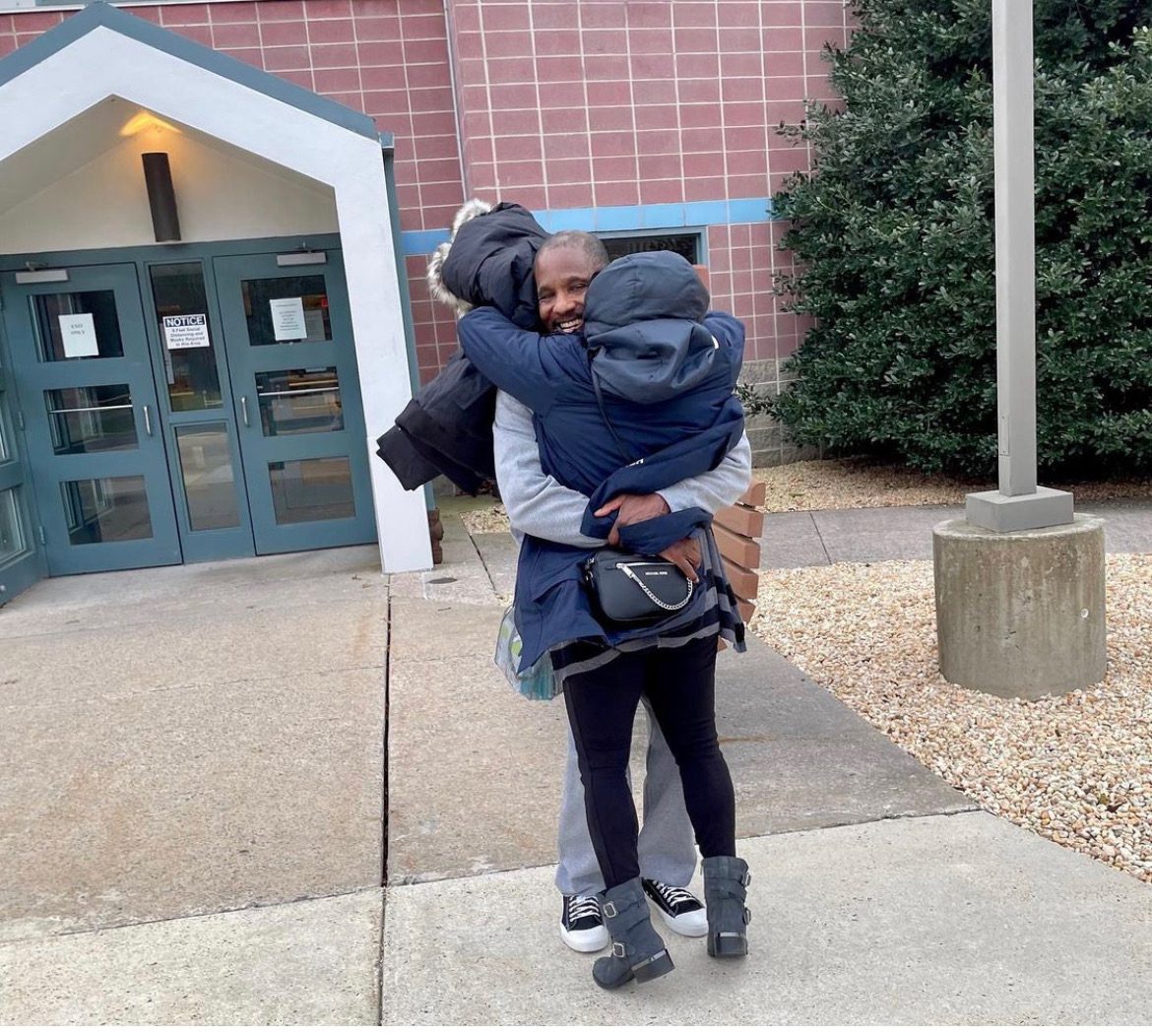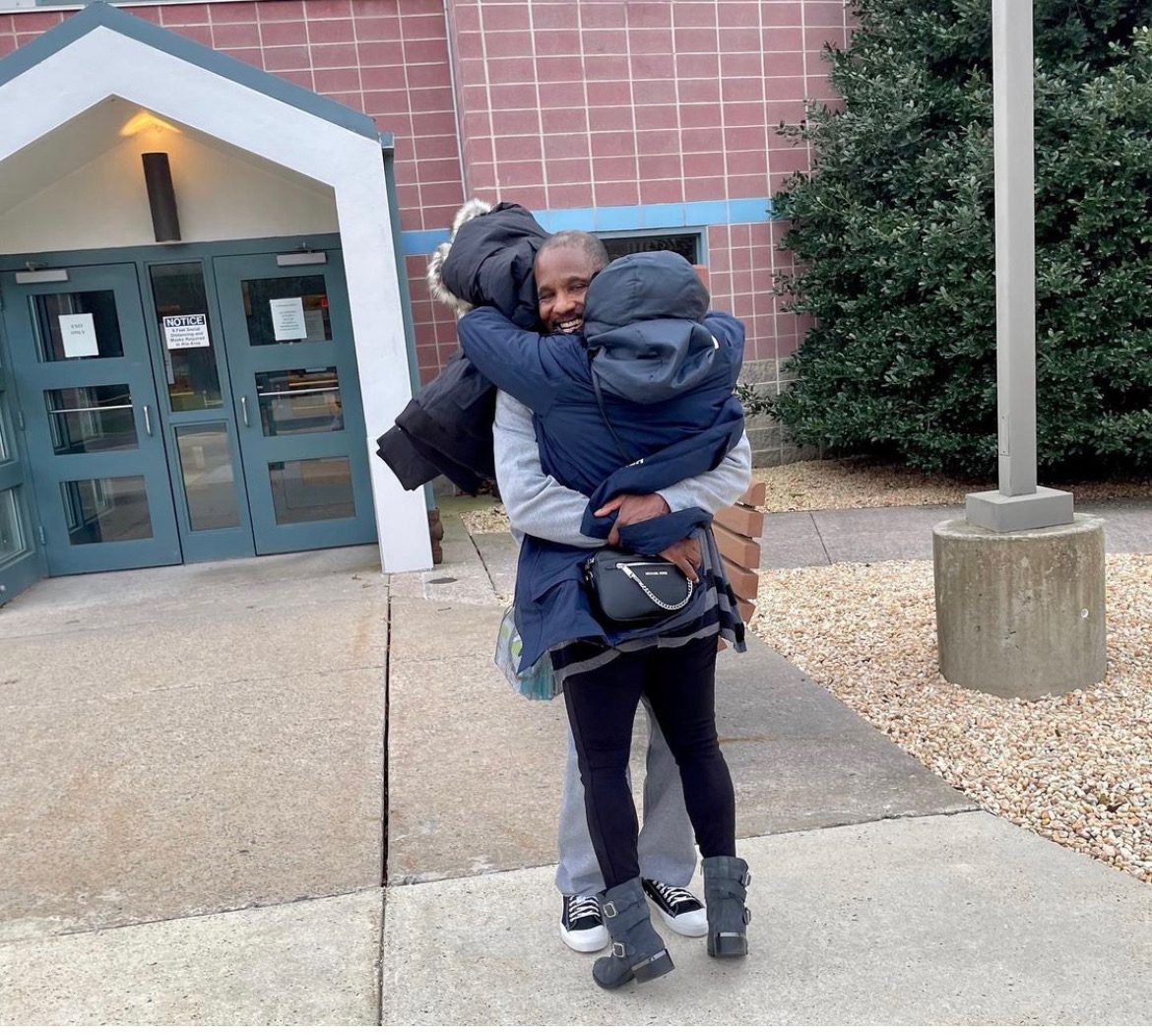Waiting for a Second Look
People given lengthy sentences at a young age are seeking relief through D.C.’s landmark sentencing reforms, but they face hurdles due to the pandemic and a dysfunctional federal prison system.
Will Lennon | March 17, 2022


Colie Long has lived behind bars longer than he did on the outside. Long, 44, was sentenced to life in prison for murder when he was just 18 years old. He used to think he’d die in lockup until last year, when the District of Columbia passed a law that could provide him with a pathway out. “I didn’t really have no realistic chances of looking to go home,” Long told Bolts from prison. “But then, lo and behold, they pass this bill.”
Long and hundreds of others are now eligible for resentencing under Washington, D.C.’s Second Look Amendment Act (SLAA), which D.C. adopted in April 2021. One of the more sweeping sentencing reforms in the country, the law allows people who have served at least 15 years of their sentence and were younger than 25 at the time of their offense to apply for resentencing and potential release.
Now a year removed, advocates for the law say it has led to the release of at least half a dozen people who would have otherwise remained in prison. But obstacles and applications are also piling up, raising questions of how much the SLAA will deliver on its unique promise. The law made D.C. into the first jurisdiction to effectively end sentences of life without the possibility of parole for youth up to age 25—the culmination of a wave of reforms that have transformed approaches to youth sentencing over the past decade.
A series of U.S. Supreme court decisions starting in 2005 compelled many states to revisit harsh sentencing laws and give people who have been incarcerated since they were children a shot at release. Those reforms typically only applied to people who were under the age of 18 at the time of their offense, but that cutoff point has blurred in recent years due to advances in neuroscience.
Research showing that the brain is still developing into early adulthood has brought new momentum to the push for second chances. So have the human and fiscal realities of a bloated and aging prison system; the number of people serving life sentences in American prisons has more than quadrupled since the 1980s, with the cost of keeping them behind bars growing as they continue to age.
A growing list of states are now clawing back life sentences imposed on young adults. The Washington State Supreme Court barred mandatory life without parole sentences for anyone under the age of 21 last year. Connecticut’s parole board recently reduced the sentences of 11 men who committed crimes when they were 25 or under to acknowledge “increased understanding in the science of brain development.” South Dakota’s GOP-run Senate passed a bill last year that would have barred life without parole for anyone under 25, though it eventually died. D.C.’s law is also part of a larger “second look” movement that is driving reforms beyond youth sentences and generating hope behind bars for others sentenced to extreme terms.
Advocates in D.C. have now turned their attention to putting the new second look reform into practice. While hundreds of incarcerated people have begun the process of applying for resentencing since last year, release isn’t guaranteed. They face major hurdles, including prosecutors who have opposed most petitions and COVID-19, which has exacerbated crisis conditions inside the notoriously dysfunctional and violent federal prison system.
People convicted of serious crimes in D.C. are typically incarcerated inside federal prisons because the district has no prison of its own. Those applying for sentencing review were usually sent to a local jail run by the D.C. Department of Corrections, but transfers to the D.C. lockup effectively stopped during the pandemic, according to lawyers who assist with resentencing petitions. Destiny Fullwood, a lawyer and deputy director of the Second Look Project, says resentencing applications are difficult to complete with clients in far-flung federal prisons for reasons that go beyond just struggling to arrange calls.
“It’s really difficult to talk to people about trauma and abuse and neglect over the phone,” Fullwood told Bolts. “It’s especially difficult if maybe your client isn’t as high functioning as other clients are.”
Michael Boone, 50, who recently became eligible to apply for resentencing under D.C.’s new law, is currently incarcerated at USP Coleman I, a high security federal prison in Florida, while he completes the process for review. He told Bolts that the lockdowns are frequent and without warning, which sometimes complicates the application process. Still Boone, who was sentenced to 55 years in prison for murder at age 20, considers the mere chance for release to be a blessing, which he says balances out the harshness of his current surroundings.
“I look at the Second Look Act as one of my greatest blessings,” Boone said. “So all the hardship that’s coming with it, the COVID, the lockdowns… We’re basically in limbo.”
D.C.’s initial big jump into sentencing reform came in the form of the Incarceration Reduction Amendment Act (IRAA), which allowed people convicted of serious crimes committed before their 18th birthday to apply for resentencing. The original IRAA, passed in 2016, required that applicants serve at least 20 years of their sentence before applying, but a later amendment cut that down to 15 years served and allowed even those who had been denied parole to apply for resentencing. The new law D.C. council members passed last year, SLAA, was another amendment that further extended eligibility to people who were up to age 25 when their crimes were committed.
Prosecutors testified against the SLAA, and the Washington Post editorialized against it when it was being considered by the council last year. But lawyers, academics and the friends and families of incarcerated people wrote to the council supporting the reforms, including Latoya Briggs, who told council members about Edward Williams, a loved one who she hoped might be resentenced under SLAA. Briggs insisted Williams had changed since his conviction. She described Williams as being “sucked into the cowboy phase of life” when he committed the crime he was incarcerated for.
James Zeigler, a D.C. lawyer and the director of the Second Look Project, said that while only about 100 people were made eligible for resentencing through the original IRAA, last year’s amendment expanded that to at least 600 people. Zeigler estimated that, between the public defender’s service, lawyers appointed by the court and pro-bono counsel, between 200 and 300 people now have attorneys working on resentencing petitions.
“Many who did not believe they would ever have a kind of viable opportunity for release all of a sudden did,” Zeigler told Bolts. “It became clear pretty quickly that this actually was pretty consequential.”
People petitioning for resentencing under SLAA have their entire life put under a microscope during the application process. A court reviews the petitioner’s disciplinary records from the federal Bureau of Prisons (BOP). Petitioners also have to be reviewed by a forensic psychologist, and their family members are interviewed.
Anthony Petty, who was released from prison in December 2020 under IRAA, said he learned things about himself and his family that he had never realized until putting his application together. Petty, who went to prison for killing a man during a fight that got out of hand when he was just 16 years old, said the process helped him better understand the trauma that paved his path to prison.
“You’re going over your neighborhood you lived in, your household you come from, your schooling, you’re going over everything—your early incarceration as a youth, your incarceration as an adult,” Petty said. “It gives the courts a better understanding of who we are as individuals. … the violence we grew up in, the households we grew up in.”
Petty said that transferring from federal prison in Kentucky to the D.C. jail during his resentencing process greatly helped his eventual transition back into society. People who transfer to the local jail can be there for more than a year during their application for resentencing. He described federal penitentiaries as being violent, abusive and “focused solely on warehousing individuals,” which can make it more difficult for petitioners to keep a clean BOP record. “If a person goes to stab you and you’re fighting back, fighting for your life, they’re going to put a disciplinary report saying you were in an altercation,” he said. “In the court’s eye, you haven’t changed.”
Transferring to the D.C. jail, Petty said, “was one of the best things that happened for me.” According to Petty, the jail offered more support services for incarcerated people and also tended to house people with resentencing petitions together. Petty recalled how people with strong incentives to keep their records clean helped set a more positive tone and culture inside the jail. “It’s a respectful place,” Petty said. “You’re not inmate 7 now. You’re a resident.”
For Long, transferring to the D.C. jail has helped him transition and prepare for life after prison. He said the prospect of being turned back to federal prison now is nightmarish and spoke of an incarcerated friend who had his petition denied after spending two years inside the D.C. jail. The friend was devastated upon learning that he was going back to federal prison.
“Just imagine,” Long said. “You’re looking forward to having a job, you’re looking forward to being able to pay rent, to having meaningful relationships with people outside, and then they take you back to an environment where you’re around guys who don’t have nothing to live for.”
Boone, who remains in federal prison while his application for resentencing is pending with the court in D.C., says the Second Look reforms have generated excitement, even among people who won’t directly be helped by the new law. He says people incarcerated with him sometimes ask him about the reforms that have made him eligible for resentencing.
“If you go to the federal system in other states, they be asking questions about it… ‘How did D.C. become the leader of it? How did D.C. become the groundbreaking people?’” Boone said. “There’s more positivity in the institutions, even with guys it doesn’t apply to right now, because they feel like even within a year or two or somewhere down the line, it could be part of the federal system.”
People released under D.C.’s sentencing reforms have self-published books, earned college degrees and have become violence interrupters after returning to their communities. Since being released in 2020, Petty has worked as a “Credible Messenger” for the D.C. government, helping reduce violence among local youth. Petty is also active in Neighbors For Justice, a community organization that connects the D.C. Jail to the neighboring community.
But Zeigler says the frequent resistance from local prosecutors has limited the reach of D.C.’s landmark sentencing reforms.
“Their treatment of these cases since day one has been aggressive and rigid and oppositional in a way that is not contemplated by or justifiable under the statute,” Zeigler said of D.C. prosecutors, who work in the U.S. Attorney’s Office for the District of Columbia.
According to the office, 95 resentencing motions filed under SLAA and its predecessors have been decided so far, 84 of which were granted. The office told Bolts that it had opposed or objected to the timing of release in all but 12 of those motions.
The office, now headed by U.S. Attorney Matthew Graves, declined a request for an interview on their approach to the law. Prosecutors have said 15-year sentences are too short, and that the people applying for release may re-offend. A man who was freed in 2020 through the original “Second Look” reform, after being originally incarcerated over a crime he committed when he was 16, was arrested last year for murder. At the time, federal prosecutors said he was the fourth person released under resentencing reforms arrested for a new crime, such as unauthorized use of a motor vehicle, but the first to be accused of a new violent offense.
Zeigler cautions that the arrest has not yet resulted in a conviction, and that the broader recidivism rate for all people released from prison is often higher. “No system is going to be able to offer a 100 percent guarantee that no one will commit crimes, and the fact a very small number of people have recidivated seems to be a poor justification for incarcerating people into old age with no opportunity to demonstrate rehabilitation and be released,” he said.
Advocates for Second Look petitioners say that the way cases are distributed across D.C.’s Superior Court judges also presents a challenge. While in the past resentencing petitions were assigned primarily to judges with criminal calendars, according to Zeigler, they are spread across the bench to judges with less experience in relevant criminal matters.
Zeigler also says he worries about compassion fatigue among judges, telling Bolts, “The excitement and momentum that kind of benefited a lot of earlier IRAA cases has kind of dissipated.”
Long, who’s now midway through the process of petitioning for resentencing under SLAA, says he wants a chance to show that he’s changed since entering prison as a teenager. “It should be acknowledged the steps that we’ve taken to correct the behaviors that we did,” he told Bolts. “Give us a second chance.”
“The bad things we did to get things in prison were acknowledged and we ultimately suffered the consequences,” he told Bolts. “I think equally important, (are) the steps that we’ve taken to correct the behaviors… There’s so much untapped potential in here.”


